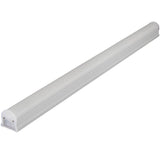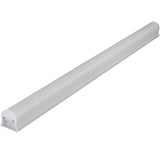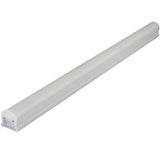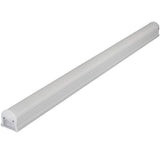A Maintenance Schedule Ensures Long-Term Performance of LED Lighting Systems
Posted by Dave on for ProLampSales
While sellers of LED lighting often promote the savings benefits of reduced maintenance because of the long life of LED light sources, this can obscure the fact that maintenance remains a key function for the successful operation of LED systems.
Maintenance of all types of commercial lighting systems includes re-lamping, power supply management, controls optimization and fixture cleaning. LED systems are no different, even if the specific tasks are not the same.
Whether maintenance is performed by a lighting maintenance company or by facility staff, the ability to effectively maintain the system can significantly affect the performance and occupant satisfaction of the LED lighting installation.
This post will touch on several of the key maintenance requirements for LED lighting systems.
Monitoring Lumen Depreciation For End of Life
It is critically important for building owners and facility staff to understand that end of life for LED lamps does not mean when the bulbs go dark like most traditional light sources. Effective end-of-life for LED is when the lumen output dims to 70% of the initial lumens. This is the point where the illumination level has dimmed enough to impact the productivity, performance and attitude of the occupants of the space. Manufacturers of LED lamps usually use 70% lumen depreciation as the threshold for "rated life" - a 25,000 hour rated life LED lamp means at 25,000 hours of operation the light output will be 70% of what it was when new.
A light meter is an essential tool for facility staff. Ideally the light level is measured at the initial installation and then periodically over time to track the decline in light output - lumen depreciation. By committing to this relatively simple procedure, facility staff can identify potential problems and anticipate the need to re-lamp or replace the fixtures.
Because LED rated life can be 25,000 hours on up to 100,000 hours, the lumen depreciation time frame is measured in years. Nevertheless, a simple annual tracking of light output with a light meter is a prudent maintenance procedure.
Troubleshooting LED System Controls For Effective Operation
Controls require more attention from maintenance staff than the LED lamps.
Controls for LED lighting systems add a new level of complexity as well as additional maintenance skill sets. Whether it is lighting maintenance company staff or facility managers, in many cases LED controls may require training to understand, troubleshoot and program the occupancy sensors, daylight sensors and dimming systems being installed.
Periodic checking of controls devices to determine they are working as intended - and the ability to troubleshoot - add to the maintenance requirements.
For new, large and expensive LED installations, building owners should hire a commissioning firm to test the lighting system and controls before the space is occupied.
Similarly, for LED retrofits, commissioning the system at the outset is ideal. The LED lamp retrofit may be replacing traditional lamps in a lighting system equipped with controls. Those controls, whether dimmers, occupancy sensors or photocontrols may not operate the LED lamps as intended - if at all.
For smaller projects, maintenance staff can test the controls to find out if they work with the new LED lamps or not.
Cleaning LED Fixtures For Optimum Performance
A significant selling point of LED for commercial customers is lower maintenance costs. If lamps need to be replaced only once every 15 to 25 years compared to every 3 to 7 years, the savings can be an important factor in the ROI calculation.
While re-lamping may be years away, the fixture itself has shorter term maintenance requirements.
Traditional light sources required re-lamping often enough that fixture cleaning could take place at the same time. Dirty lenses and diffusers impact fixture lumen output. With LED, the much longer lamp life means much less opportunity to clean the fixtures, assuming that task is linked to re-lamping.
The importance of fixture cleaning depends on the occupancy type, but LED fixtures, no different than traditional light source fixtures, require periodic cleaning. Facilities staff may want to consider adding fixture cleaning as a discrete, scheduled task for LED systems.
LED Lighting Maintenance Summary
The significant benefits of LED lighting for commercial buildings do not preclude maintenance, even if a primary selling point is savings on staff time related to re-lamping.
To ensure long term performance of the LED system, these three maintenance tasks should be scheduled:
- Measure lumen depreciation annually with a light meter
- Test controls initially and then periodically to ensure proper operation
- Create and implement a fixture cleaning schedule
Featured Products (View All)
0 Comments




